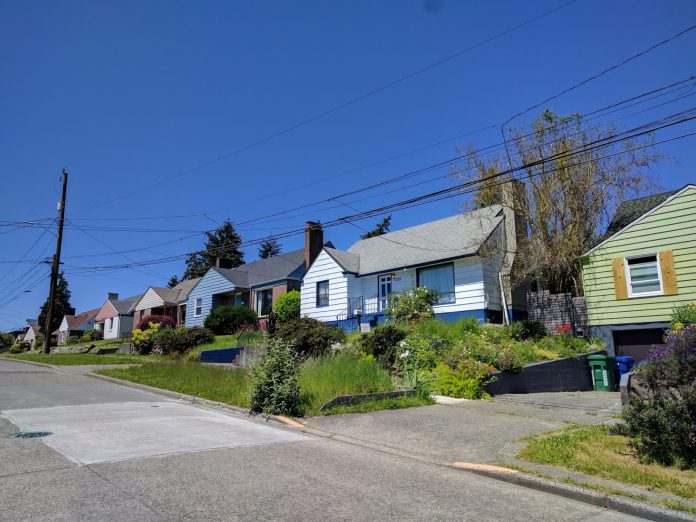The Seattle Times Editorial Board weighed in on pending reform to increase backyard cottage and garage apartments in single family zones and it was as you would expect: completely out of touch with reality. The editorial board opposed the proposed changes, which are expected to increase accessory dwelling unit (ADU) production by about 70% over the next decade, creating an additional 1,200 to 1,400 homes over the status quo.
The crux of the argument is we should be building and enshrining more detached single family homes and basically worshiping them as the idealized form of housing, which Seattle Times columnist and editorial board member Brier Dudley has argued before—on multiple occasions. Suffice to say, single family homes being really expensive in Seattle isn’t an argument for dropping everything we’re doing and trying to somehow build more of the most land-consuming type of housing on the very limited space remaining in Seattle.
The Seattle Times’ brain trust argued the ADU changes would represent a tripling of density in single family zones, which is extremely deceptive. The City’s analysis projected as many as 3,330 new accessory dwelling units (both backyard cottages and attached units) in the first decade spread out across Seattle’s 135,000 single family lots. In practice, this means a 2.5% increase in dwellings per acre, a far cry from a tripling of density.
The crack editorial squad point to a statistic that 26% of apartments in Seattle’s downtown core were vacant to suggest the housing crisis is pretty much over. This overlooks the context that much of the new apartments coming online have been large buildings in the downtown core that typically take a year to lease up. Just how long will high vacancy rates persist in the downtown core as new apartments lease up? Moreover, as their own housing reporter, Mike Rosenberg, often points out, a couple of tepid quarters for rent gains doesn’t erase the seven-year stretch of record-setting rent hikes. Rents are more than 50% higher than they were before the post-recession boom.
And thinking long-term, Seattle’s building boom is doing an awfully thorough job of building out Downtown Seattle. What will we do during the next building boom with the core built out and Seattle’s outer neighborhoods–if the Seattle Times Editorial Board gets its way–still largely off-limits to growth? The outcome would likely be displacement pressure ramping up and tenants being even more pinched.
It’s not worth agonizing over every bonkers argument within this Hindenburg of an editorial, but we thought we’d highlight a few choice tweets dunking on the Times board.
https://twitter.com/drvox/status/1013559172032495617
.@SeaTimesOpinion saying there is "institutional bias against homeowners…” and we “must preserve single-family neighborhoods, one of [Seattle’s] most precious assets.” pic.twitter.com/z2RKmsYECd
— Zoey Jordan Salsbury (@zoeyjsalsbury) July 1, 2018
https://twitter.com/rottenindenmark/status/1013485634046943233?s=21
Just to add a little more context to his comments on helping oligarchs, this is the same person who Amazon personally sent their PR-written threat to “pause construction planning” to when the council tried to put a small tax on them for affordable housing.
— Amy (@amyliztweets) July 1, 2018
Here's a question for you: is the magic of Seattle in its natural beauty, progressive mojo, intellectual capital, cultural mix, & orcas…or is it in easy parking & single-family homes that sprawl to the mountains if we don't grow UP? Or do we not intend to let anyone else in?
— Emily Johnston (@enjohnston) July 1, 2018
https://twitter.com/ByRosenberg/status/1013143300591648768
https://twitter.com/ByRosenberg/status/1013517218947088384?s=19
https://twitter.com/jenny_schuetz/status/1013824520627654656
DEIS Shows Options and Urgency of Pending Backyard Cottage Reform
Doug Trumm is publisher of The Urbanist. An Urbanist writer since 2015, he dreams of pedestrian streets, bus lanes, and a mass-timber building spree to end our housing crisis. He graduated from the Evans School of Public Policy and Governance at the University of Washington in 2019. He lives in Seattle's Fremont neighborhood and loves to explore the city by foot and by bike.


